Cabbage Pests
ENTFACT-300: Cabbage Pests | Download PDF
by Ric Bessin, Extension Specialist
University of Kentucky College of Agriculture
Cutworms, imported cabbageworm, cabbage looper, diamondback moth larvae, and cross-striped cabbage worm can be each cause substantial damage to cabbage. These pests can cause serious damage to young transplants as well as causing serious leaf feeding damage to older plants. Damage to the head or wrapper leaves often reduces marketability. Because many of these pests are much more difficult to control as large larvae, controls will always be most effective when directed toward small larvae. So early detection of economic infestations is critical to the management of these pests.
Cabbage Looper
Watch for cabbage loopers particularly on the undersides of leaves along leaf margins, but they can be found anywhere on the plant.
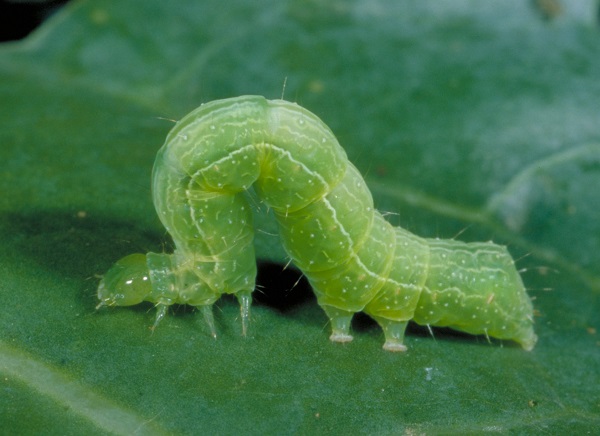
Figure 1. Cabbage looper arches its back when moving.
The larvae are light green in color with a pale white stripe along each side and two thin white stripes down the back. The body tapers toward the head.
There are three pairs of slender legs near the head and two pair of club-shaped prolegs toward the other end. When mature, the larvae reach 1-1/2 inches in length. The ridged, white, round eggs are usually laid singly on the underside of the outer leaves. The pupae are brown, about 3/4 inch long and wrapped in a delicate cocoon of white tangled threads. The adult moth is a mottled, grayish-brown moth with a 1-1/2 inch wing span and a small silvery spot resembling a sock in the middle of each front wing.
Because the larvae have no legs in the middle area of their body, this area arches when the insect moves. All larval stages of the insect move with this looping motion.
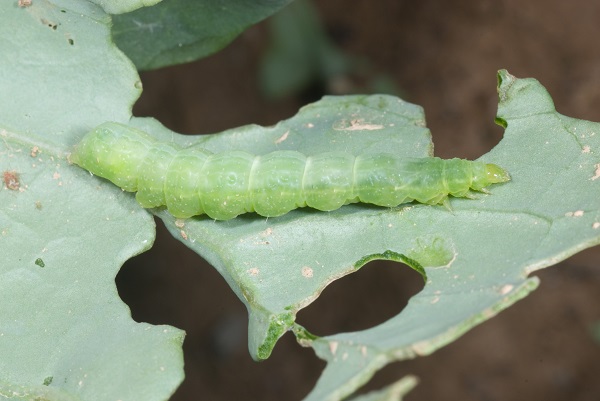
Figure 2. A cabbage looper's body is narrow near its head.
Large larvae will often curl up and drop down to the base of the plant when the leaf is disturbed. As they grow, they move toward the center of the plant. They generally feed on areas between leaf veins.
When scouting, examine the undersides of the lower leaves for newly hatched larvae. Pull back loose wrapper leaves and examine around the base of the head for larger larvae. Evidence of frass (excrement) at the base of the head aids in the detection of larvae. Because larger loopers are more difficult to control, it is important to time applications for younger larvae. Pheromone traps are available to detect adult cabbage looper presence and initiate field sampling.
Diamondback Moth
Diamondback moth larvae, despite their small size, can be very destructive to cole crops. Eggs are laid singly or in small groups on the undersides of lower leaves. Eggs are small, yellowish-white and somewhat football-shaped.
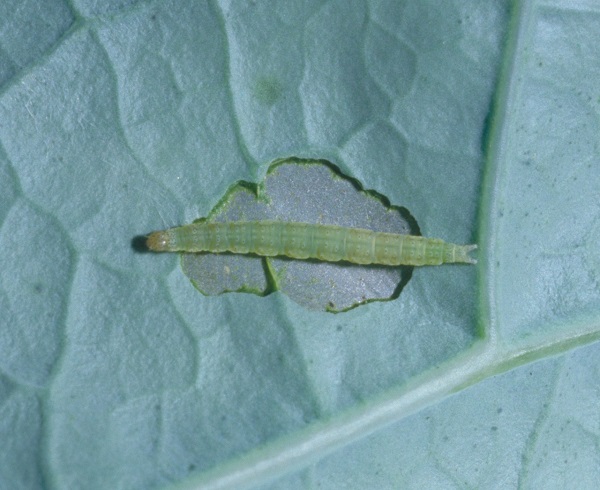
Figure 3. Diamond back larvae feed partway through the leaf and have a forked tail.
Larvae are small, yellowish-green, spindle shaped, and have a forked tail. When mature, larvae are 5/16 inch in length.
The pupae are found in a gauze-like cocoon attached to leaves or stems of the cabbage plant. The moth has a small, slender, grayish-brown body with folded wings. The wings of the male form three yellow diamond-shaped spots where they meet.
Larvae feed on all plant parts, but prefer to feed around the bud of young plants. The young larvae mine between the upper and lower leaf surfaces. Look for young larvae emerging from small holes in the underside of the leaf. Older larvae create irregular shot holes while leaving the upper surface intact. Larvae often drop from the plant on silk threads as soon as the leaf is disturbed.
Monitoring should begin when the plants are young. During cupping, larvae that feed on leaves in the bud are difficult to find unless the outer leaves are pulled back. Bud leaves of pre-heading plants should be examined if feeding damage is present. Their feeding on the bud may cause malformation of the cabbage head.
Imported Cabbageworm
The bullet-shaped eggs have distinct ridges and are initially white when laid but turn dark yellow as they mature.
The larvae are velvety green with a narrow, light yellow stripe down the middle of the back and have four pairs of prolegs in addition to the three pairs of legs toward the head. When mature the larvae reach 1-1/4 inches in length.
The pupae is greenish-brown in color and attached to the undersides of cabbage leaves. The adult is a white butterfly about 1-3/4 inches long tinged with yellow on the undersides of the wings and black spots-on the front wing.
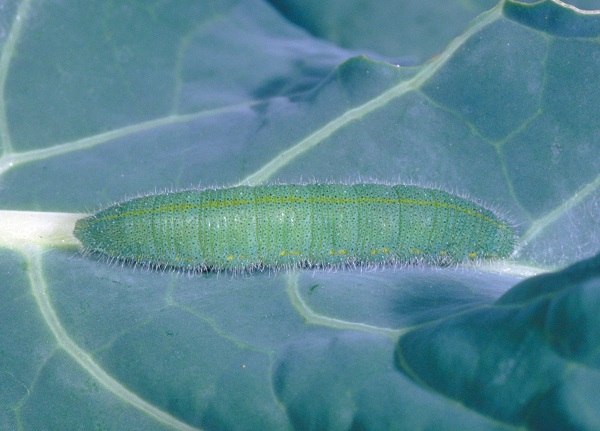
Figure 4. Imported cabbageworm often feeds on young leaves in the bud.
Imported cabbageworm cause similar damage as loopers, but feed closer to the center of the plant. Larvae are often concealed next to veins or the midrib on the underside of the leaves. Feeding is not restricted to between leaf veins. Large larvae can be particularly damaging to young plants and can cause significant yield reductions. Scouting for eggs and larvae should begin as soon as the white butterflies are seen flying about during the day. Eggs are laid singly and found anywhere on the plant.
Cross-Striped Cabbageworm
The larva is bluish-gray in color with numerous black stripes running cross wise on its back. Below the transverse stripes on each side is a black and yellow stripe along the length of the body.

Figure 5. Cross-striped cabbageworm lays eggs in groups, so the larvae may be numerous on a few plants and absent on others.
When mature the larvae reach 3/4 inch in length. The larvae drop to the soil to pupate in a tight cocoon just below the soil surface. The scale-like eggs are light yellow and laid in masses of 20 to 30 on the undersides of the leaves. The moth is yellowish-brown to brown with dark zigzag markings and has a wingspan of about 1 inch.
Because eggs are laid in clusters, individual plants scattered over a field may be infested with large numbers of cross-striped cabbageworms. Larvae feed on all tender parts of the plant, but prefer terminal buds. Young leaves and buds are often riddled with holes.
Beet Armyworm
The beet armyworm is a major pest in the southwestern and southern US and an occasional invader of vegetable crops in Kentucky.

Figure 6. This beet armyworm has an egg of a parasitic fly behind its head.
The beet armyworm is a light-green to black larva with four pairs of abdominal prolegs and a dark head. There are many fine, white wavy lines along the back and a broader stripe along each side. There is usually a distinctive dark spot on each side just above the second pair of true legs.
Females lay masses of up to 80 eggs underneath a covering of cottony-white scales, as many as 600 eggs over a 3 to 7-day period. These eggs hatch in 2 to 3 days and the larvae first feed together in a group near the egg cluster. As they grow, they gradually move away from the egg masses. Many small larvae die during this wandering stage but the behavior tends to spread out the infestation. Beet armyworm is quite mobile, one larvae may attack several plants in a row. Older larvae may feed on fruit as well as leaves. After they complete their feeding, the 1-1/4" inch larvae pupate in the soil in a loose cocoon containing soil particles and leaf fragments. The life cycle takes about a month to complete in warm weather.
Beet armyworm feeding on young tender growth can be very damaging to small transplants. Often a fine webbing is produced by smaller larvae near these feeding sites. Older plants can become rapidly defoliated. Vegetable growers should pay particular attention to fall plantings of beans, tomatoes, crucifers, and other truck crops.
Timing of insecticide applications is very important. Once larvae are 1/2 inch or longer, they become very difficult to kill with insecticides. So treatment must be targeted against young larvae. Only with frequent field surveys can these pests be detected and controlled effectively.
Flea Beetles
Several species of flea beetles attack cole crops in Kentucky. They are very small brown to black beetles that may have some yellow markings on their wing covers. The eggs are laid at the base of the plants. The white, brown-headed larva has three pairs of legs and is about 1/4 long when mature. Flea beetles over winter as adults in plant debris in and around the field.
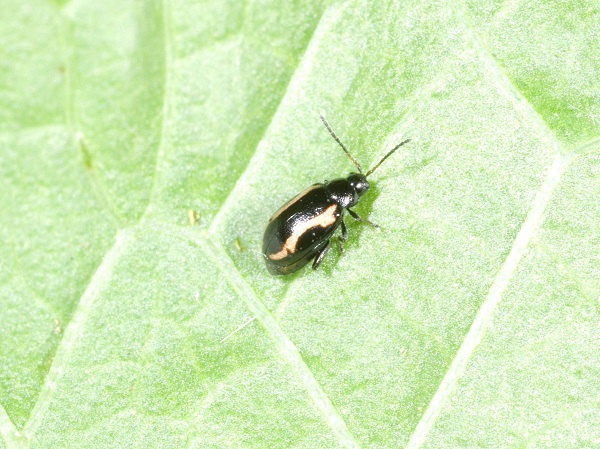
Figure 7. Flea beetles leave small round holes in leaves.
Flea beetles can cause serious damage to seedlings and small plants. Look for "shot-hole" damage on the leaves. Severe infestations may stunt or even kill young plants. These beetles will jump when disturbed. Larvae are found in the soil and attack roots, but it is the adult feeding that is usually the primary damage.
Cutworms
Early detection of cutworm infestations means that controls can be applied before serious stand reduction occurs. Cutworms are recognized by their smooth skin, greasy gray color and "C-shaped"; posture when disturbed. Eggs are laid by the night flying moths on grasses, weeds, and other host plants.

Figure 8. Black cutworm is a common pest.
Subterranean cutworms feed at night causing serious damage to stems and foliage of young plants, during the day they retreat to their underground burrows. Stalks of plants may be cut. The variegated cutworm climbs the plants to feed on foliage and the bud. It may be found feeding on the developing head after cupping. Cutworm infestations are sporadic and often associated with sections of the field that are weedy, have high amounts of organic residue, or poor drainage. Fields need to be prepared and weeds eliminated at least two weeks prior to planting to reduce cutworm damage.
Southern Cabbageworm
A close relative to the imported cabbageworm, southern cabbageworm is a late season pest that be a problem in some years. Controls for other cabbage caterpillars will be effective against this pest.
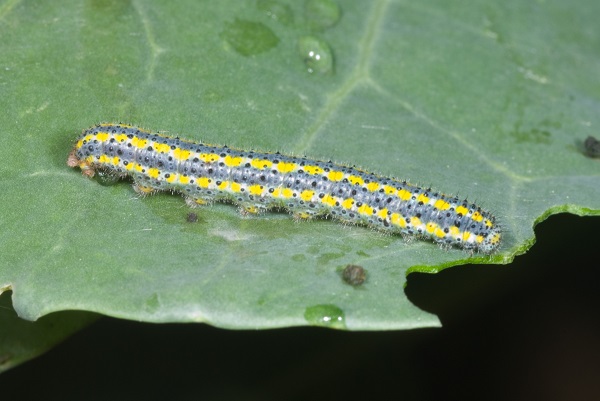
Figure 9. Southern cabbageworm is a sporadic fall pest.
Cabbage Aphids
Aphids of any of several species present either dead or alive in sufficient numbers to reduce the marketability of cabbage. The pale-green cabbage aphid looks like other aphids but with a grayish waxy coat similar to cigarette ash. These aphids infest the undersides of leaves and suck sap. Infested plants may show signs of curling, wrinkling, or cupping of the leaves. Some plants may be stunted and produce unmarketable heads.
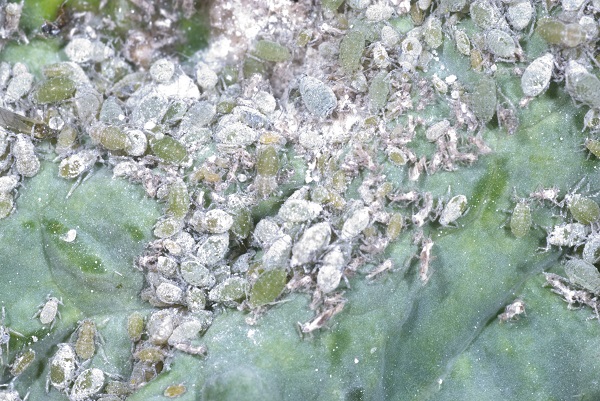
Figure 10. Cabbage aphids can be common during cool weather.
Cabbage Maggots
Eggs are deposited at the base of plants or crevices in the soil. The white, legless maggots feed or burrow into the roots and stems of the plant. They are blunt at the rear and pointed toward the head. The brown pupal cases are hard and egg-shaped. The adult is a dark-gray fly with smoky-gray wings, black legs, and three stripes on its back. They over winter in the soil as pupae, when the soils warms in the spring, adults emerge, mate, then search for suitable host plants for egg laying.
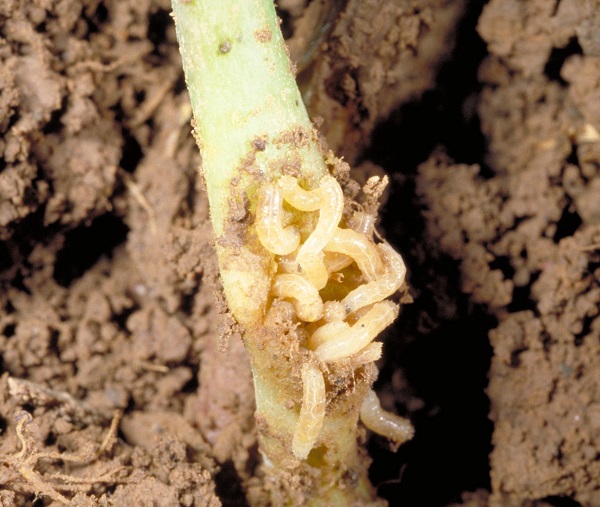
Figure 11. Cabbage maggot can cause serious losses to seedlings.
These maggots may eat small roots or tunnel into larger roots or stems. Infested plants become riddled with winding tunnels. secondary organisms are often introduced and colonize these wounds. Damaged plants may look wilted, gray-blue or purplish, stunted, or wilt during the heat of the day. Crops planted early when the weather is cool and wet for long periods of time are potentially at greater risk to damaging infestations of cabbage maggots.
Harlequin Bug
Harlequin bug is a stink bug and feeds with piercing-sucking mouthparts. The result is light-colored, fan-shaped spots on leaves. This pest tolerates many of the insecticides used a-on cabbage and can be particularly difficult to manage with organic controls.

Figure 12. Harlequin bug is very difficult to manage in organic systems.
Control
Successful control of cabbage pests, particularly the leaf feeding caterpillars, depends on proper pest identification, timing of applications and insecticide coverage. because the different species caterpillars may be susceptible to different insecticides, it is important to identify the species involved in an infestation.
Most of the eggs of the foliage feeding caterpillars are laid on the undersurfaces of the leaves and the larvae, until mature, tend to feed on the underside of the foliage or in the bud. Thus, obtaining adequate coverage of the plants with an insecticide is difficult. Insecticides should be sprayed in high volume solutions (80 to 120 gpa) at high pressure (150 to 250 psi) through hollow cone nozzles. Because of the leaf texture of these crops, addition of spreading and sticking agents should also be used to improve coverage.
Revised: 11/19
CAUTION! Pesticide recommendations in this publication are registered for use in Kentucky, USA ONLY! The use of some products may not be legal in your state or country. Please check with your local county agent or regulatory official before using any pesticide mentioned in this publication.
Of course, ALWAYS READ AND FOLLOW LABEL DIRECTIONS FOR SAFE USE OF ANY PESTICIDE!
Photos courtesy Ric Bessin, University of Kentucky Entomology & L. Townsend, University of Kentucky Entomology
